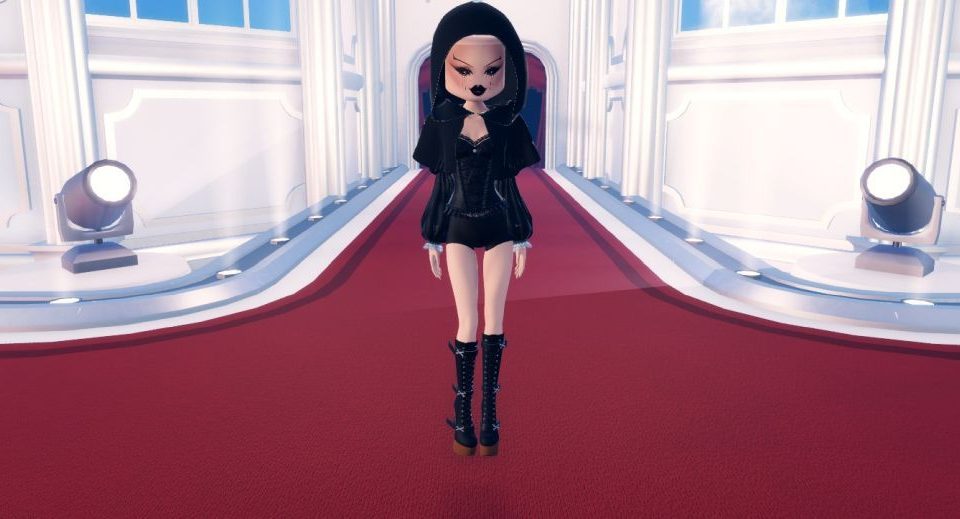
How to Master the Dystopia Dress to Impress Look for a Futuristic Edge
August 11, 2025Innovation is not merely a fad in the ever changing fashion industry; it is essential. The industry is coming up with innovative ideas in response to consumer demands for greater sustainability, individuality, and technological integration. Dystopia DTI is one such innovative movement that is causing a stir. Taking shape at the nexus of fashion, technology, and social criticism, Dystopia DTI is literally reinventing what it means to wear the future. This is a cultural statement, a digital revolution, and a groundbreaking advancement in wearable art—it’s not simply another fashion brand.
However, what precisely is Dystopia DTI, and why is it being heralded as the newest development in fashion? Let’s examine its history, guiding principles, and revolutionary influence on the world of fashion.
Dystopia DTI: What is it?

Fundamentally, Dystopia DTI (commonly abbreviated as DYSTOPIA DTI) is a progressive fashion label and creative group that blends innovative digital textiles with dystopian aesthetics. The name itself is a clue: “Dystopia” depicts a world dominated by technology, social unrest, and environmental crises, while “DTI” is an acronym for Digital Textile Intelligence, a term the brand created to characterize its combination of data-driven design, augmented reality (AR), and smart textiles.
Dystopia DTI creates experiences rather than merely clothing. With blockchain-verified authenticity, biometric sensors, and responsive materials integrated throughout, every garment serves as a storytelling canvas. Dystopia DTI is pushing the limits of what fashion in the twenty-first century can be, from dresses that connect with virtual environments to jackets that change color depending on mood.
The Theory Underpinning Dystopia DTI
Dystopia DTI is based on a strong philosophical tenet: fashion must reflect the future, which is today, in contrast to typical fashion firms that only concentrate on aesthetics or seasonal trends. The brand is influenced by post-apocalyptic films, cyberpunk literature, and contemporary concerns including urban deterioration, data privacy, and climate change.
But there is more to Dystopia DTI than gloom and misery. It involves rethinking resilience. According to the brand, fashion can be a vehicle for awareness, empowerment, and change in a society beset by ecological and social issues. Wearers are encouraged to face difficult realities and express their identities in radical new ways by Dystopia DTI’s embrace of the “dystopian” aesthetic, which is meant to be a call to action rather than a warning.
1. How Wearable Technology and Smart Fabrics Are Transforming Fashion in Dystopia DTI
The usage of smart fabrics in Dystopia DTI is among its most intriguing features. These aren’t your typical textiles. They are designed to react to many environmental cues, including light, sound, temperature, and even the wearer’s biometrics. For instance, a garment might pulse with LED patterns synchronized with the wearer’s heartbeat, while a Dystopia DTI hoodie might heat up in chilly weather.
Fashion becomes more useful as a result of this technological integration, in addition to being cool. Consider a garment that filters air pollution in real time, or apparel that senses your stress levels and modifies its texture to help you relax. Science fiction is becoming a wearable reality thanks to Dystopia DTI.
2. Integration of Augmented Reality (AR)
The usage of AR in fashion is also being pioneered by Dystopia DTI. Users can access digital content, like as animated patterns, 3D avatars, or even short films that explain the design’s backstory, by scanning their clothing with a specialized app. As a result, digital and physical fashion coexist in a hybrid experience.
Young customers who spend as much time in virtual places as they do in the real world, known as the metaverse generation, will find this feature very intriguing. Dystopia DTI is at the forefront of bridging the gap between digital and physical identities by transforming fashion into something multifaceted and interactive.
3. Innovation for Sustainability
Dystopia DTI has a strong commitment to sustainability despite its high-tech nature. The company uses solar-powered manufacturing facilities, zero-waste production methods, and repurposed and biodegradable materials. Electronic waste is decreased because even the digital components are made to last and be repairable.
Additionally, blockchain technology is used by Dystopia DTI to guarantee transparency. From the sourcing of raw materials until the final sale, each garment has a digital passport that is kept on the blockchain. This enables customers to fight the environmental damage caused by quick fashion and make morally sound decisions.
4. Design Driven by the Community
The decentralized design model of Dystopia DTI is another distinguishing feature. The brand works with a global network of artists, coders, and activists rather than depending only on its own designers. Through NFTs (non-fungible tokens), fans can vote on future collections, offer design suggestions, and even co-own limited-edition items.
Customers are empowered by this democratization of fashion, which also promotes a feeling of pride and community. It is more than simply donning a brand; it is about joining a movement.
Why Fashion’s Future Is in Dystopia DTI

There is a turning point in the fashion business. There is tremendous demand to become more inclusive and sustainable, on the one hand. Customers, on the other hand, are drawn to digital interaction, customisation, and innovation. This intersection is ideal for Dystopia DTI.
Experts think Dystopia DTI is the next big thing for the following reasons:
- In terms of innovation: Dystopia DTI has already established a completely connected ecosystem, whilst many businesses are still experimenting with digital fashion.
- It appeals to Alpha and Gen Z: These digitally savvy generations seek authenticity, tech integration, and social responsibility—all fundamental aspects of Dystopia DTI.
- It is flexible and scalable: The designs of Dystopia DTI can adapt to different markets and cultural norms, ranging from streetwear to haute couture.
- It’s a platform as well as fashion: Dystopia DTI is more than just a brand thanks to augmented reality, blockchain, and community feedback; it’s a novel approach to creative cooperation.
- Dystopia DTI is positioned to be at the forefront of fashion’s transition from the runway to virtual environments. It’s not just predicting the future—it’s creating it.
Impact in the Real World: Where Is Dystopia DTI Now?
Already, Dystopia DTI has had a big impact on the fashion industry. It made its premiere with a holographic runway presentation that combined digital avatars and live models during Paris Fashion Week. Within hours, the collection sold out, and secondary market resale prices surged.
To create AR-compatible apparel for the metaverse, the brand has also collaborated with well-known tech firms like Meta and NVIDIA. Furthermore, Dystopia DTI has started educational programs that instruct students in digital fabrication and sustainable design in marginalized areas.
With a burgeoning cult following and support from tech and fashion celebrities, Dystopia DTI is quickly moving from a niche inventor to a major disruptor.

Questions and Answers (FAQs)
Q1: In Dystopia DTI, what does DTI mean?
A: The brand refers to its combination of smart materials, data integration, and responsive design technologies as “Digital Textile Intelligence,” or DTI for short.
Q2: Can Dystopia DTI last?
Indeed. Through the use of recyclable and biodegradable materials, zero-waste production, solar-powered facilities, and blockchain-based transparency, Dystopia DTI places a high priority on sustainability. The brand is committed to decreasing fashion’s environmental footprint.
Q3: Is Dystopia DTI apparel only to the metaverse, or can I wear it in the real world as well?
Of course. While Dystopia DTI includes AR and digital aspects, all clothing are totally functional and worn in normal life. Although they improve the experience, digital elements do not take the role of tangible utility.
Q4: How is blockchain used by Dystopia DTI?
Every article of clothing has a distinct digital passport that is kept on the blockchain. This ensures authenticity and ethical sourcing by tracking the item’s origin, materials, production process, and ownership history.
Q5: Is Dystopia DTI affordable?
Dystopia DTI markets itself as a high-end brand because of its cutting-edge technology and environmentally friendly operations. Nonetheless, the brand provides collaboration collections and limited-edition drops at more affordable pricing ranges.
Q6: Is it possible to personalize my Dystopia DTI apparel?
Indeed. Customers can customize digital elements, vote on designs, and even co-create limited-edition items using the brand’s app and community platform.
Q7: Where do I purchase Dystopia DTI merchandise?
Dystopia DTI can be purchased on its own website and at a few upscale stores. Additionally, some items are offered as NFTs for wear in virtual surroundings that are exclusively digital.
Q8: Does Dystopia DTI have international shipping?
In order to satisfy demand worldwide, the company is growing its distribution network and does really offer international delivery.
Closing Remarks: Getting Ready for the Future
Dystopia DTI is a shining example of creativity and purpose in a world when fashion is frequently accused for being shallow or unsustainable. It demonstrates that apparel can be intelligent, interactive, and profoundly meaningful—it doesn’t have to be just made of fabric and thread.
Dystopia DTI is influencing fashion by embracing the dystopian look as a springboard for reinvention rather than as a destination. Not only is appearance important, but so are critical thinking, responsible behavior, and practically wearing your ideals.
One thing is certain as technology continues to transform every part of our lives: Dystopia DTI is not merely the newest fashion trend; rather, it serves as a model for what fashion ought to be.
Dystopia DTI is a trend worth following, regardless of your interests in technology, sustainability, or just daring, avant-garde fashion. The fashion industry is already in the future, not just coming.



